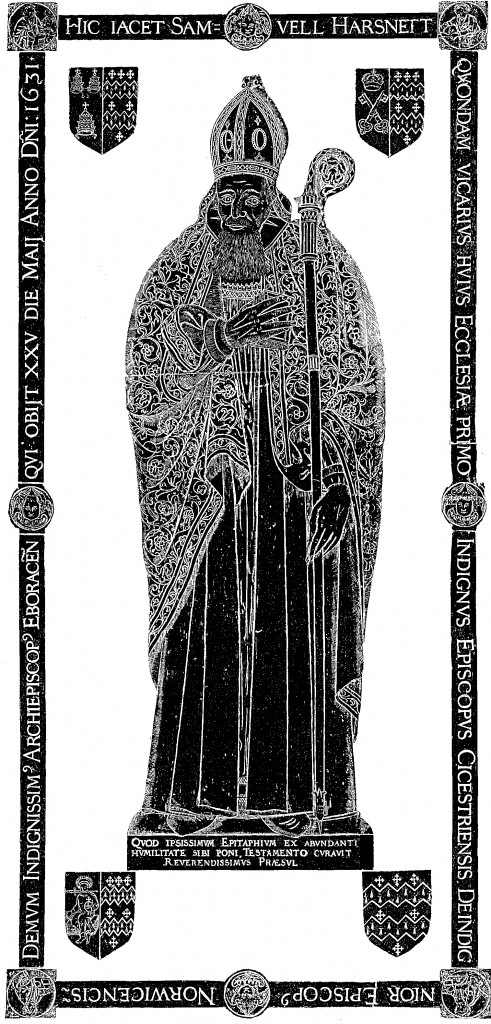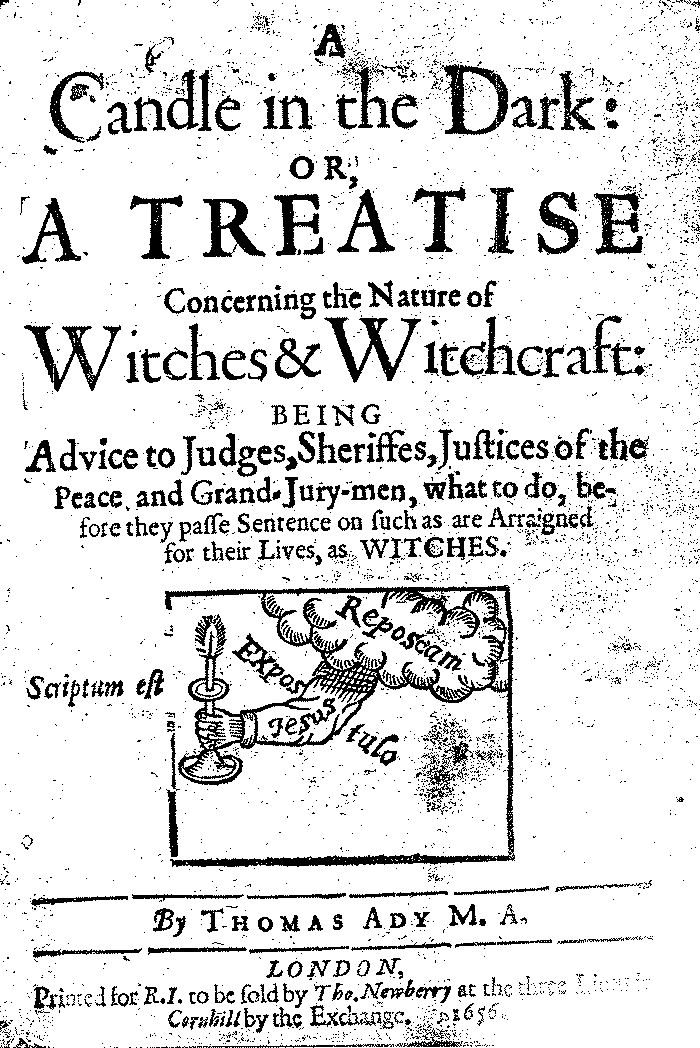Breadth Study Part 3: Sceptical publications
5.0(1)
5.0(1)
Card Sorting
1/20
There's no tags or description
Looks like no tags are added yet.
Study Analytics
Name | Mastery | Learn | Test | Matching | Spaced |
|---|
No study sessions yet.
21 Terms
1
New cards
What was Reginald Scot’s key publication, and when was it published?
‘The Discoverie of Witchcraft’- 1584
* Daemonologie was written in response.
* Daemonologie was written in response.

2
New cards
What was Scot’s sceptical publication about?
* Does not deny the existence of witchcraft
* Groups the witches into four categories:
* Innocents: The falsely accused
* Deluded: Believed they were witches
* Genuinely malificient witches: poisoners
* Imposters/murderers
* Groups the witches into four categories:
* Innocents: The falsely accused
* Deluded: Believed they were witches
* Genuinely malificient witches: poisoners
* Imposters/murderers
3
New cards
Why was Scot’s publication important for the growth of sceptical views?
* He admitted the existence of witches ^^but did not believe in a corporal pact with the devil/success in harming people^^
* It does have an impact on later sceptical thought/publication- see Webster, Harsnett, Ady, Bekker
* It does have an impact on later sceptical thought/publication- see Webster, Harsnett, Ady, Bekker
4
New cards
Why was Scot’s publication less important for the growth of sceptical views?
Roper: too much of a leap to assume that he didn’t believe
* Leads to the publication of Daemonologie (published in response). Opposite of Scot’s intention.
* Theoretical debate: witchcraft act came only 20 years later in 1604.
* Witchcraft had not yet reached it’s peak
* ^^Argument is important, practical impact was very limited.^^
* Leads to the publication of Daemonologie (published in response). Opposite of Scot’s intention.
* Theoretical debate: witchcraft act came only 20 years later in 1604.
* Witchcraft had not yet reached it’s peak
* ^^Argument is important, practical impact was very limited.^^
5
New cards
What was Samuel Harsnett’s key publication, and when was it published?
‘A Discovery of the Fraudulent Practises of John Darrel’- 1599

6
New cards
Who was Samuel Harsnett?
Chaplain to the Bishop of London, becomes an important figure in the church (Archbishop of York)
7
New cards
What was Harsnett’s publication about?
Equating Catholic ‘tricks and miracles’ (i.e. exorcism and holy water) with Puritan’s exorcism: both heretics/frauds (taking credit for God’s work).
* Pamphlet War: a detection of the sinful, shaming, lying and ridiculous discourse of Samuel Harsnett.
* Some argue that his work is an anti-Catholic tract.
* Pamphlet War: a detection of the sinful, shaming, lying and ridiculous discourse of Samuel Harsnett.
* Some argue that his work is an anti-Catholic tract.
8
New cards
Why was Harsnett’s publication important for the growth of sceptical views?
^^If exorcism is wrong, possession by the devil is cast into doubt.^^
* ^^possession and bewitchment are conflated, so bewitchment and beliefs about witchcraft are also undercut.^^
^^Pamphlet war:^^
* ^^debate over what the devil can/can’t do^^
* ^^Reveals disagreements over the honesty of Darrell’s patients^^
* ^^possession and bewitchment are conflated, so bewitchment and beliefs about witchcraft are also undercut.^^
^^Pamphlet war:^^
* ^^debate over what the devil can/can’t do^^
* ^^Reveals disagreements over the honesty of Darrell’s patients^^
9
New cards
Why was Harsnett’s publication less important for the growth of sceptical views?
Less about belief, more about ecclesiastical power trying to stamp out extremists like Darrell.
ELITE class debate: ordinary people still convinced by possession, so this doesn’t alter popular belief
Church tightens up the regulations around exorcism but the 1604 witchcraft act makes it easier to prosecute with firmer punishments.
ELITE class debate: ordinary people still convinced by possession, so this doesn’t alter popular belief
Church tightens up the regulations around exorcism but the 1604 witchcraft act makes it easier to prosecute with firmer punishments.
10
New cards
What was Thomas Ady’s key publication, and when was it published?
A Candle in the Dark- 1656

11
New cards
What was Ady’s publication about?
* Used a Bible as the only source (same as used by Witchfinders)
* Main argument: actions of the witch finders and suspicions of witches not found in the bible. Ady was compelled to write due to his knowledge of the wrongful executions.
* Work described as a revision of Scot’s publications.
Three sections:
1. Definition of a witch as bible says
2. Original scripture has been misinterpreted by catholics to justify witch-hunts
3. Critique of english works promoting witch-hunting (even Daemonologie).
* Witches don’t have familiars
* Main argument: actions of the witch finders and suspicions of witches not found in the bible. Ady was compelled to write due to his knowledge of the wrongful executions.
* Work described as a revision of Scot’s publications.
Three sections:
1. Definition of a witch as bible says
2. Original scripture has been misinterpreted by catholics to justify witch-hunts
3. Critique of english works promoting witch-hunting (even Daemonologie).
* Witches don’t have familiars
12
New cards
Why was Ady’s publication important for the growth of sceptical views?
* Ady critiqued major witchcraft works such as Daemonologie (1597) arguing that it didn’t reference the Bible.
* Wide-reaching: in the Salem hunt, it was referenced by George Burroughs.
* Wide-reaching: in the Salem hunt, it was referenced by George Burroughs.
13
New cards
Why was Ady’s publication less important for the growth of sceptical views?
* Ady still believed in witchcraft and the existence of witchcraft
* Ady’s argument not new fact: stated by him that it was based on Scot’s arguments.
* Ady’s argument not new fact: stated by him that it was based on Scot’s arguments.
14
New cards
What text was published by Webster and when?
‘The Displaying of Supposed Witchcraft’- 1677

15
New cards
What was Webster’s publication about?
* Similar to Ady in that beliefs not found in the bible should be rejected.
* Witches did exist but could not command supernatural powers. They carried out evil acts through OWN power, not the Devils.
* Disputed DD case and PS- disputed the latter from first hand experience upon meeting Edmund’s father.
* Roland Jenks: accused of cursing and killing hundreds of people whilst arrested. Webster attributed this to poison.
* Witches did exist but could not command supernatural powers. They carried out evil acts through OWN power, not the Devils.
* Disputed DD case and PS- disputed the latter from first hand experience upon meeting Edmund’s father.
* Roland Jenks: accused of cursing and killing hundreds of people whilst arrested. Webster attributed this to poison.
16
New cards
Why was Webster’s publication important for the growth of sceptical views?
Practical, significant impact: lead to public debate over existence of witchcraft. Royal Society supported Webster’s views.
* Webster therefore played a significant role in leading the RS to take a sceptical stance reaction to witchcraft.
Argued from observable evidence which made him unique/ the first sceptic to use this method.
* Webster therefore played a significant role in leading the RS to take a sceptical stance reaction to witchcraft.
Argued from observable evidence which made him unique/ the first sceptic to use this method.
17
New cards
Why was Webster’s publication less important for the growth of sceptical views?
* Still believed in witchcraft
* Relied heavily on Scot’s argument.
* Relied heavily on Scot’s argument.
18
New cards
What was Bekker’s publication called and when was it published?
‘The Enchanted World’- 1691

19
New cards
What was Bekker’s publication about?
* Influenced by Scot and agreed about the impossibility of witchcraft. Doubts arose in the face of irregularity/deception.
* Devil cannot operate on Earth because he has no body, is forever in hell, and only those who are heretics believe in the Devil having any power.
* Devil cannot operate on Earth because he has no body, is forever in hell, and only those who are heretics believe in the Devil having any power.
20
New cards
Why was Bekker’s publication important for the growth of sceptical views?
* 4000 copies published (significant print run in the context of the time) and translated into at least 4 other languages.
* Book banned in some German states
* Use of Cartesian rationalism heralded an intellectual shift in scepticism
* Contemporaries regarded Bekker as a dangerous heretic and he was forced to leave the ministry
* Book banned in some German states
* Use of Cartesian rationalism heralded an intellectual shift in scepticism
* Contemporaries regarded Bekker as a dangerous heretic and he was forced to leave the ministry
21
New cards
Why was Bekker’s publication less important to the growth of sceptical thought?
* Arguments very similar to that of Ady or Scot.
Hugh Trevor Roper:
* debate only in Holland, German translation was poor and incomprehensible. ^^Short term scandal^^ which was mostly forgotten by 1706
* Argument about the devil being locked in hell was ^^too narrow/theological^^
* Debate over what came first: decline in belief about the devil and then decline in belief in witchcraft?
Later sceptics disassociated themselves from Bekker’s argument.
Hugh Trevor Roper:
* debate only in Holland, German translation was poor and incomprehensible. ^^Short term scandal^^ which was mostly forgotten by 1706
* Argument about the devil being locked in hell was ^^too narrow/theological^^
* Debate over what came first: decline in belief about the devil and then decline in belief in witchcraft?
Later sceptics disassociated themselves from Bekker’s argument.